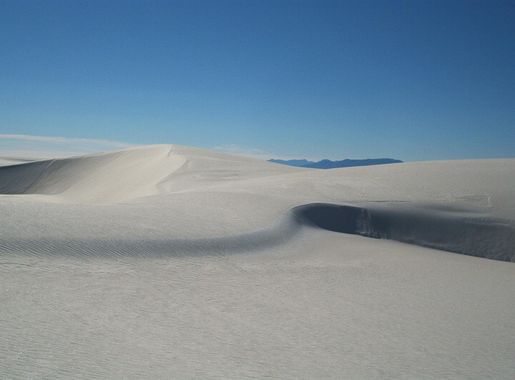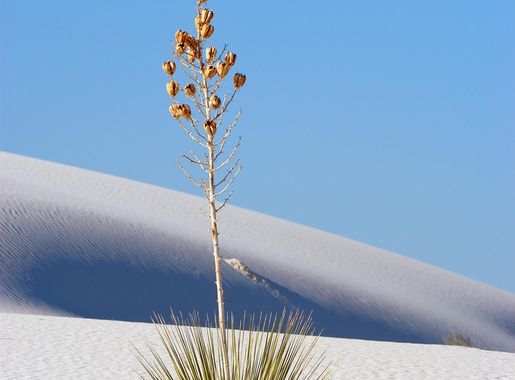
The Enchanting Dunes of White Sands
Discover the enchanting white gypsum dunes of White Sands, New Mexico, a unique desert landscape perfect for adventure, relaxation, and stargazing.
White Sands, located in the heart of the Tularosa Basin in southern New Mexico, is a mesmerizing destination famed for its vast expanse of glistening white gypsum dunes. This unique landscape, the largest of its kind in the world, stretches over 275 square miles and offers a surreal and almost otherworldly experience. The dunes, constantly shifting and reshaping with the wind, create a stunning and dynamic environment that captivates visitors with its beauty and tranquility. At White Sands National Park, visitors can explore the dunes through various activities such as hiking, sledding, and picnicking. The park's well-marked trails cater to all levels of adventure, from short, family-friendly walks to more challenging treks. The Interdune Boardwalk provides a convenient and accessible way to enjoy the scenery and learn about the unique flora and fauna that thrive in this harsh yet beautiful environment. One of the most magical experiences at White Sands is witnessing the sunset over the dunes. As the sun dips below the horizon, the white sands take on a soft, golden glow, creating a breathtaking and unforgettable sight. For those looking to delve deeper into the area's history and culture, the nearby town of Alamogordo offers museums, galleries, and local eateries that showcase the rich heritage of the region. White Sands is also known for its clear, dark skies, making it an ideal spot for stargazing. The park often hosts special events such as full moon hikes and astronomy programs, providing visitors with a chance to marvel at the night sky in a pristine, light-pollution-free setting.
Local tips in White Sands
- Visit early in the morning or late in the afternoon to avoid the heat and enjoy the best lighting for photography.
- Bring plenty of water and sun protection, as the reflective white sands can intensify the sun's rays.
- Rent a sled from the visitor center to slide down the dunes for a fun and memorable experience.
- Check the park's schedule for special events like ranger-led full moon hikes and stargazing programs.
- Wear comfortable, closed-toe shoes as the sand can get very hot during midday.
The Enchanting Dunes of White Sands
White Sands, located in the heart of the Tularosa Basin in southern New Mexico, is a mesmerizing destination famed for its vast expanse of glistening white gypsum dunes. This unique landscape, the largest of its kind in the world, stretches over 275 square miles and offers a surreal and almost otherworldly experience. The dunes, constantly shifting and reshaping with the wind, create a stunning and dynamic environment that captivates visitors with its beauty and tranquility. At White Sands National Park, visitors can explore the dunes through various activities such as hiking, sledding, and picnicking. The park's well-marked trails cater to all levels of adventure, from short, family-friendly walks to more challenging treks. The Interdune Boardwalk provides a convenient and accessible way to enjoy the scenery and learn about the unique flora and fauna that thrive in this harsh yet beautiful environment. One of the most magical experiences at White Sands is witnessing the sunset over the dunes. As the sun dips below the horizon, the white sands take on a soft, golden glow, creating a breathtaking and unforgettable sight. For those looking to delve deeper into the area's history and culture, the nearby town of Alamogordo offers museums, galleries, and local eateries that showcase the rich heritage of the region. White Sands is also known for its clear, dark skies, making it an ideal spot for stargazing. The park often hosts special events such as full moon hikes and astronomy programs, providing visitors with a chance to marvel at the night sky in a pristine, light-pollution-free setting.
When is the best time to go to White Sands?
Iconic landmarks you can’t miss
White Sands National Park
Experience the breathtaking beauty of White Sands National Park, a unique landscape of shimmering white dunes in New Mexico, perfect for adventure and photography.
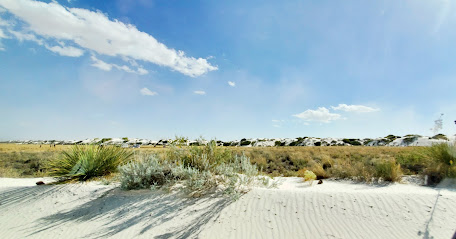
Carlsbad Caverns National Park
Discover Carlsbad Caverns National Park, a UNESCO World Heritage Site, filled with stunning caves, diverse wildlife, and breathtaking desert landscapes.
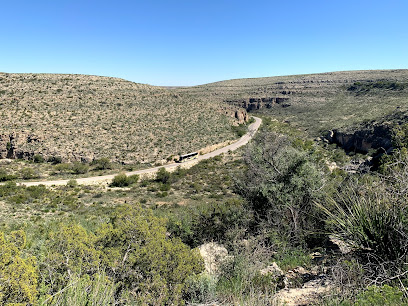
White Sands Visitor Center
Explore the enchanting White Sands Visitor Center, your gateway to the stunning white gypsum dunes and unique natural beauty of New Mexico.
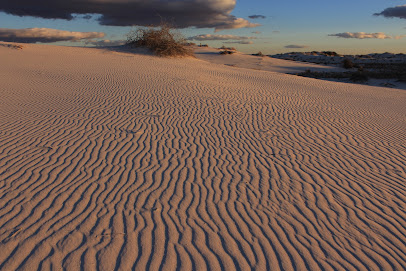
McGinn's PistachioLand Home of the World's Largest Pistachio
Visit McGinn's PistachioLand in Alamogordo, NM, the home of the world's largest pistachio and a delightful destination for nut lovers and families alike.
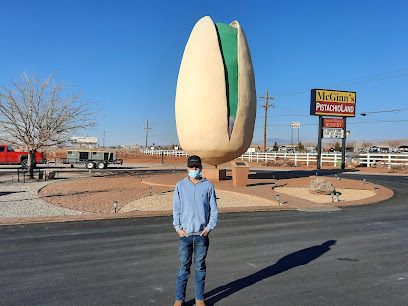
Bandelier National Monument
Explore Bandelier National Monument: A breathtaking blend of ancient cliff dwellings, stunning landscapes, and rich cultural history in New Mexico.
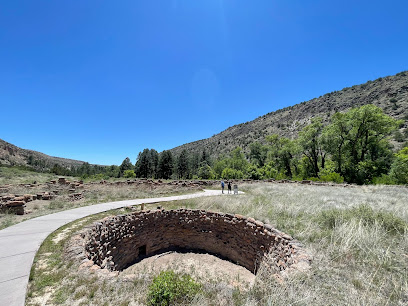
Dripping Springs Natural Area
Explore Dripping Springs Natural Area, a stunning hiking destination in Las Cruces, New Mexico, rich in history and natural beauty.
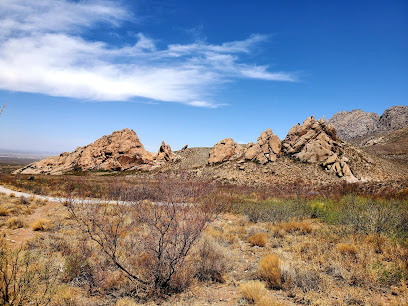
Oliver Lee Memorial State Park
Explore the stunning landscapes and rich history of Oliver Lee Memorial State Park, a perfect outdoor getaway in New Mexico's Tularosa Basin.
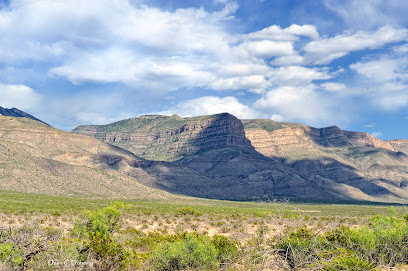
Organ Mountains-Desert Peaks National Monument
Explore the stunning landscapes and rich history of Organ Mountains-Desert Peaks National Monument, a must-visit destination for nature lovers and adventurers.
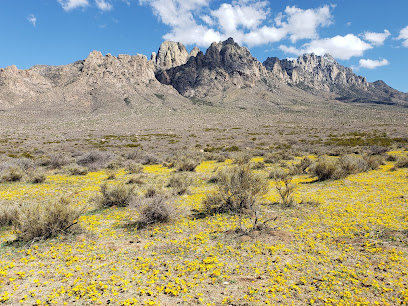
White Sands Missile Range Museum
Uncover the legacy of missile technology and space exploration at the White Sands Missile Range Museum, a cultural landmark in New Mexico.
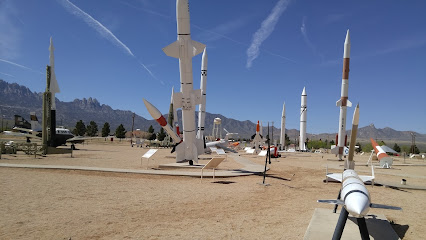
Interdune Boardwalk
Discover the breathtaking landscapes of the Interdune Boardwalk in Tularosa, NM, a must-visit hiking area for nature lovers and adventure seekers.

Alkali Flat Trailhead
Discover the stunning Alkali Flat Trailhead in New Mexico, a hiker's dream with breathtaking views and rich history waiting to be explored.
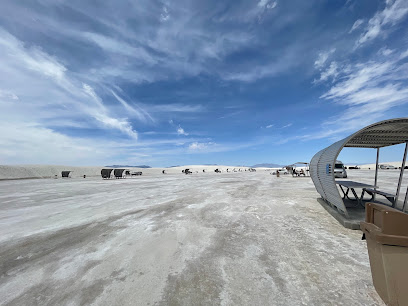
Space Murals Museum And Gift Shop
Explore the cosmos through stunning murals and unique gifts at the Space Murals Museum and Gift Shop in Las Cruces, New Mexico.
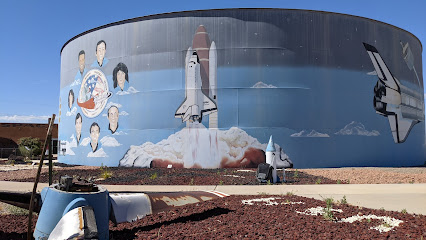
Roadrunner Lanes
Experience the joy of bowling at Roadrunner Lanes, a top-notch bowling alley in White Sands Missile Range, perfect for family fun and friendly competition.
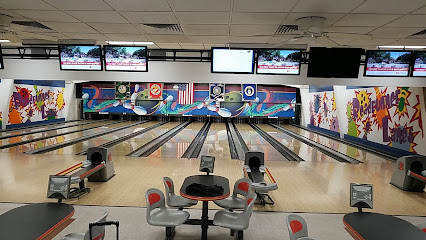
Frontier Club
Discover the Frontier Club: A captivating banquet hall in White Sands offering delicious cuisine and a unique military ambiance for your special events.
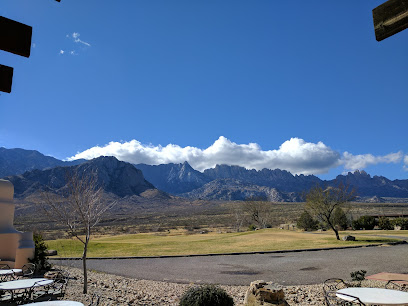
White Sands Missile Range
Explore the captivating history and breathtaking landscapes at White Sands Missile Range, a unique tourist attraction in New Mexico.
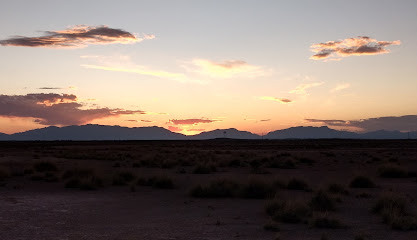
Unmissable attractions to see
White Sands National Park
Explore the breathtaking beauty of White Sands National Park, home to the world's largest gypsum dune field and stunning desert landscapes.
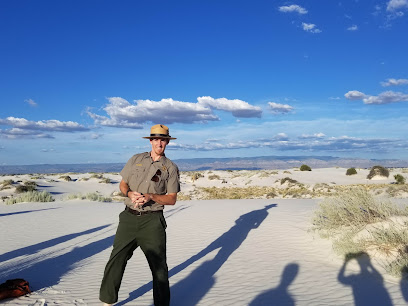
McGinn's PistachioLand Home of the World's Largest Pistachio
Experience the whimsy of McGinn's PistachioLand, featuring the world's largest pistachio and a taste of New Mexico's nutty delight.
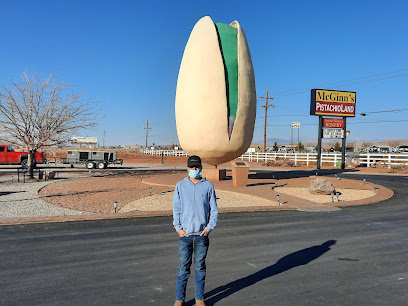
Las Cruces Regional Aquatic Center
Experience the ultimate aquatic adventure at Las Cruces Regional Aquatic Center, where fun and relaxation meet in a family-friendly environment.
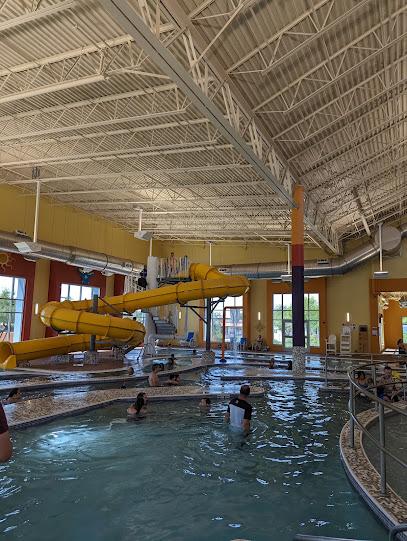
White Sands Missile Range Museum
Discover the intersection of military history and space exploration at the White Sands Missile Range Museum, a captivating destination for all visitors.
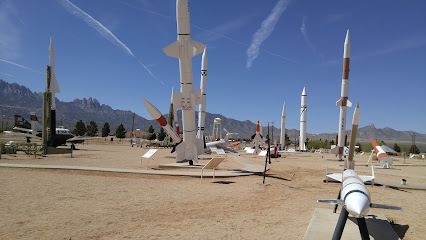
Interdune Boardwalk
Explore the breathtaking landscapes of the Interdune Boardwalk in Tularosa, New Mexico, where nature's beauty meets accessible hiking trails.
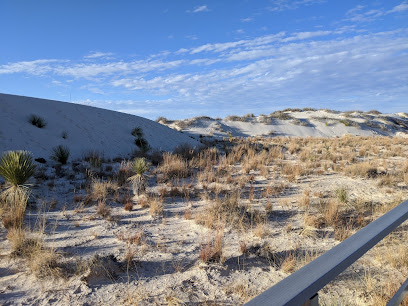
Tularosa Basin Museum of History
Explore the Tularosa Basin Museum of History for a deep dive into New Mexico's unique cultural heritage and historical narratives.
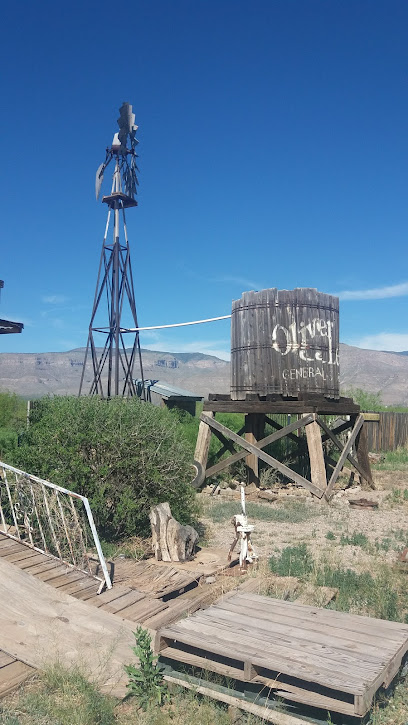
Chihuahuan Desert Nature Park
Discover the beauty and diversity of the Chihuahuan Desert Nature Park in Las Cruces, New Mexico, where nature meets adventure in a stunning desert landscape.
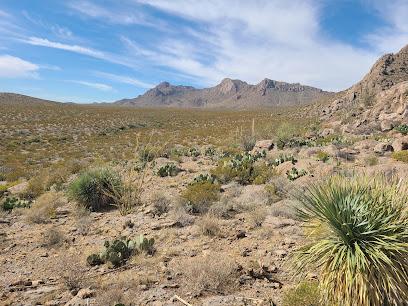
Shroud Exhibit and Museum
Discover the mysteries of the Shroud of Turin at the Shroud Exhibit and Museum in Alamogordo, a unique blend of art, science, and spirituality.
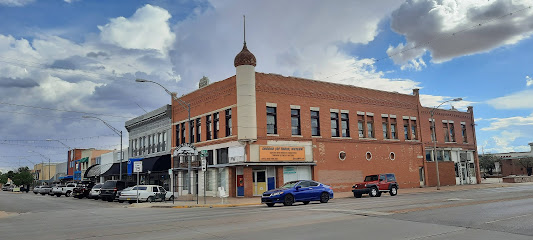
White Sands Historic District
Explore the White Sands Historic District, a blend of military history and stunning gypsum landscapes in New Mexico.
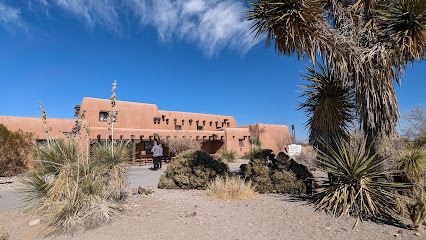
Essential places to dine
Sparkys
Discover Sparkys in Hatch, NM - where delicious burgers meet mouthwatering barbecue in a warm and inviting atmosphere.
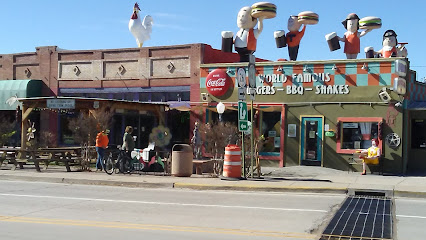
Si Señor Restaurant
Discover authentic Mexican cuisine at Si Señor Restaurant in Las Cruces—where flavor meets family-friendly dining.
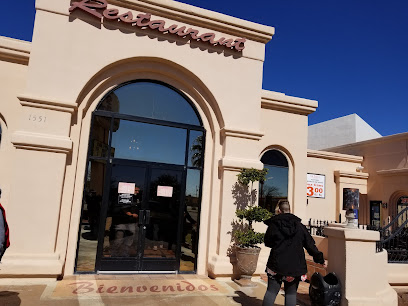
Andele Restaurant
Experience authentic Mexican cuisine at Andele Restaurant in Mesilla – where flavor meets tradition in every dish.
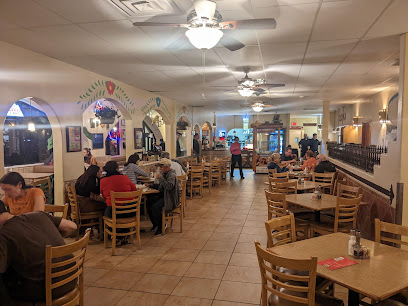
Olive Garden Italian Restaurant
Discover authentic Italian flavors at Olive Garden in Las Cruces – where every meal feels like a special occasion.
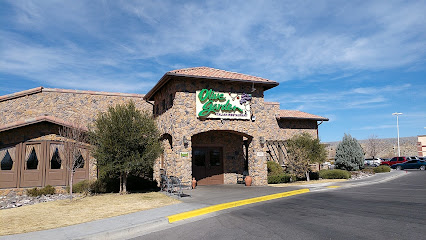
Chick-fil-A
Discover delicious Southern comfort food at Chick-fil-A in Las Cruces – perfect for families and travelers craving tasty chicken dishes.
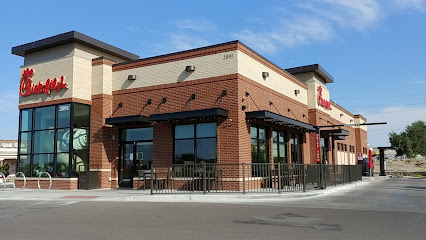
La Nueva Casita Café
Discover La Nueva Casita Café: A Taste of Authentic Mexican Cuisine in Las Cruces - Perfect for Families & Food Lovers Alike!
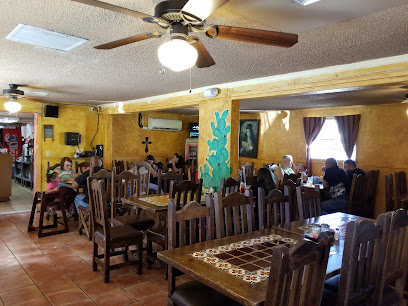
Hi-D-Ho Drive In
Savor classic American burgers at Hi-D-Ho Drive In in Alamogordo - a must-visit spot for fast-food lovers!

Mad Jack's Mountaintop Barbecue
Experience the best barbecue with stunning mountain views at Mad Jack's Mountaintop Barbecue in Cloudcroft, NM.

CJ's Si Señor Restaurant
Experience authentic Mexican flavors at CJ's Si Señor Restaurant in Alamogordo – a local favorite known for its vibrant atmosphere and delicious cuisine.
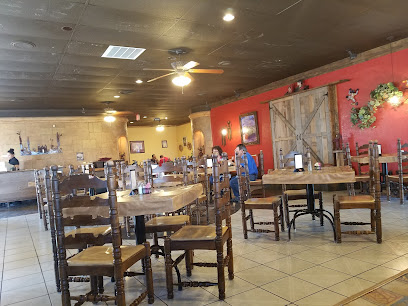
D. H. LESCOMBES WINERY & BISTRO
Experience exquisite wines and gourmet dining at D. H. Lescombes Winery & Bistro in Las Cruces - a must-visit culinary gem.
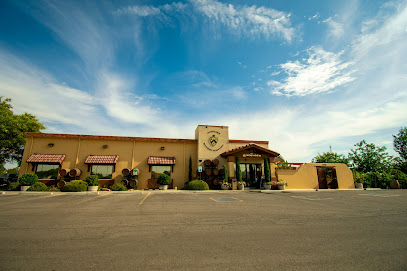
Jack in the Box
Experience fast food bliss at Jack in the Box in Las Cruces – where American classics meet delightful Mexican flavors!
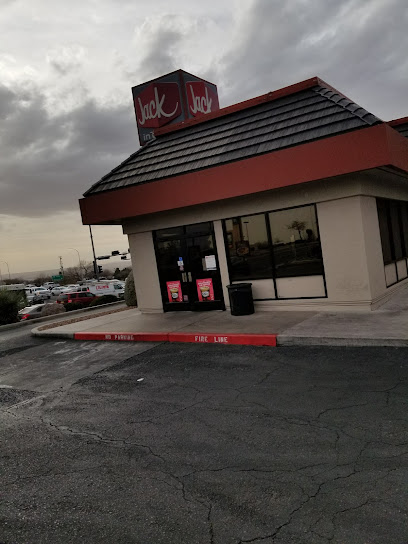
Ruby Tuesday
Experience classic American flavors at Ruby Tuesday in Las Cruces—where every meal feels like home.
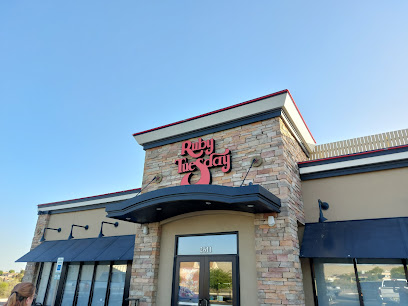
Buckhorn Tavern
Experience the best of American comfort food at Buckhorn Tavern - home of mouthwatering burgers in San Antonio, New Mexico.
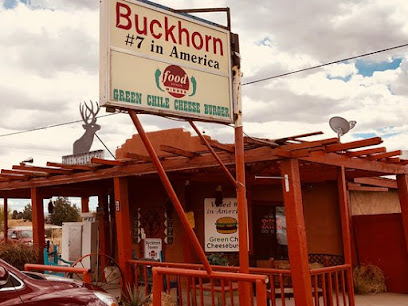
Cattle Baron
Experience top-notch steak dining at Cattle Baron in Las Cruces – where every bite is a celebration of flavor.
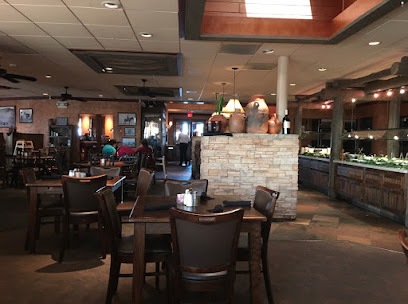
Blake's Lotaburger
Discover the flavor of New Mexico at Blake's Lotaburger—where every bite tells a story of tradition and taste.
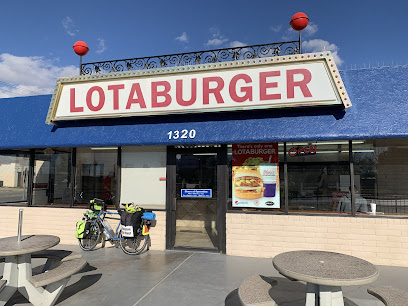
Markets, malls and hidden boutiques
White Sands Visitor Center
Explore the stunning White Sands Visitor Center, your gateway to the breathtaking beauty of New Mexico's iconic White Sands National Park.
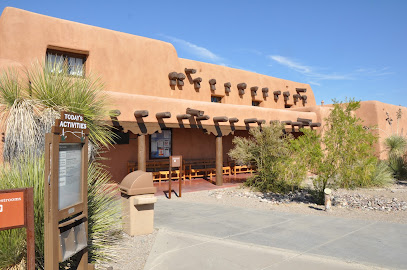
Barnes & Noble
Explore a treasure trove of books, a cozy café, and family-friendly activities at Barnes & Noble in Las Cruces, NM.
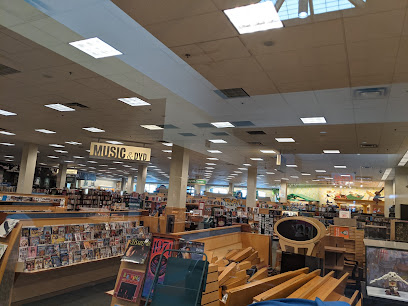
Ross Dress for Less
Uncover unbeatable deals on stylish clothing, shoes, and accessories at Ross Dress for Less in Las Cruces, NM.

White Sands Mall
Discover the best shopping, dining, and entertainment at White Sands Mall in Alamogordo, New Mexico, a vibrant hub for all your retail needs.
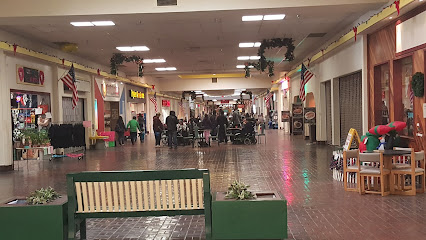
Target
Explore the ultimate shopping experience at Target in Las Cruces, where a variety of products await every traveler and shopper.

dd's DISCOUNTS
Discover unbeatable prices on clothing, home goods, and shoes at dd's DISCOUNTS in Las Cruces, NM.

Savers
Explore Savers Thrift Store in Las Cruces for incredible deals on vintage clothing, unique home decor, and second-hand treasures that tell a story.
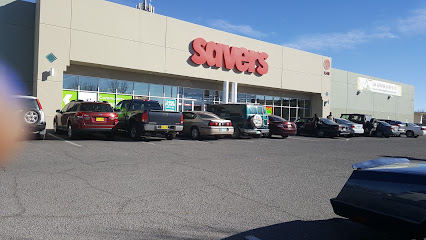
White Sands Missile Range Museum
Discover the rich history of military technology and space exploration at the White Sands Missile Range Museum in New Mexico.
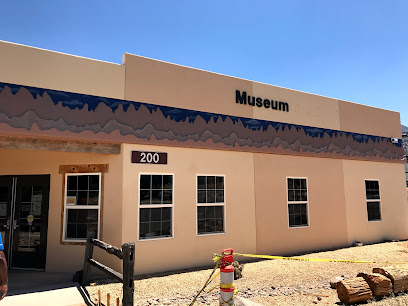
Top of the Eighth Cannabis
Discover top-quality cannabis products at Top of the Eighth Cannabis in Anthony, New Mexico, your gateway to the vibrant local cannabis culture.
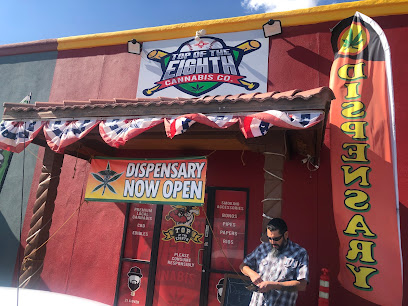
Bath & Body Works
Discover a world of beauty at Bath & Body Works in Las Cruces, NM, where fragrant candles, luxurious lotions, and perfect gifts await your exploration.

NM Vintage Wines
Explore NM Vintage Wines in Mesilla for an exquisite selection of wines, craft beers, and premium cigars in a charming setting.

White's City Gift Shop
Explore unique souvenirs and local crafts at White's City Gift Shop, the perfect stop for tourists visiting Carlsbad Caverns.
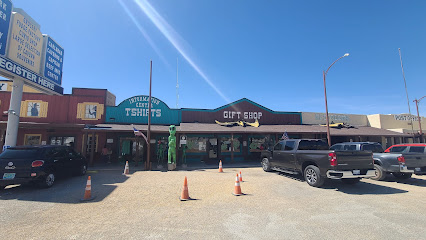
Los Amigos Dickies Retail Store
Discover a stylish selection of Dickies apparel at Los Amigos Dickies Retail Store in Las Cruces, the perfect blend of comfort and durability for every occasion.
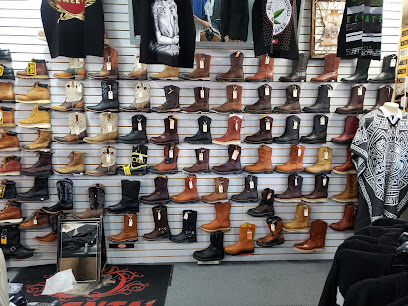
Post Exchange
Explore the Post Exchange at White Sands Missile Range for a unique shopping experience filled with local treasures and military essentials.

The Little Store
Experience the welcoming charm of The Little Store in Chaparral, NM, where local flavors and friendly service meet.
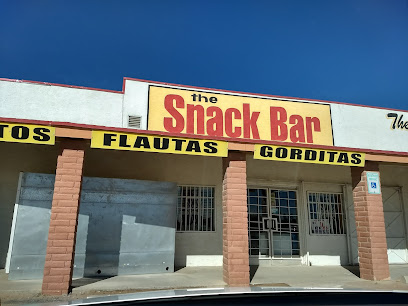
Essential bars & hidden hideouts
White Sands Visitor Center
Explore the stunning White Sands Visitor Center, your gateway to the breathtaking gypsum dunes and rich history of New Mexico's incredible landscapes.
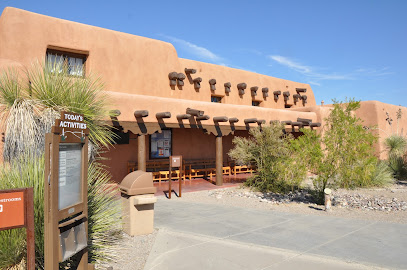
Hi-D-Ho Drive In
Experience classic American fast food at Hi-D-Ho Drive In in Alamogordo, NM – where delicious burgers and nostalgic vibes await!

CJ's Si Señor Restaurant
Experience the vibrant flavors of Mexico at CJ's Si Señor Restaurant in Alamogordo, a must-visit for food lovers seeking authentic Latin American cuisine.
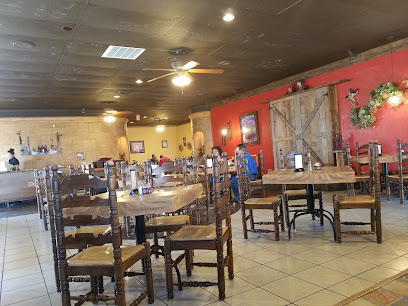
D. H. LESCOMBES WINERY & BISTRO
Discover the perfect blend of fine wines and exquisite cuisine at D. H. Lescombes Winery & Bistro in Las Cruces, NM, a must-visit for every traveler.
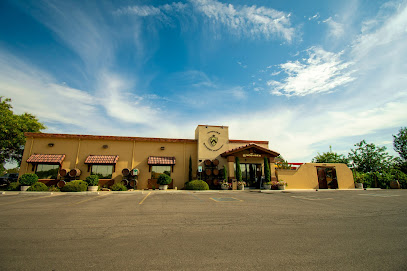
Double Eagle Restaurant
Discover the elegance of Double Eagle Restaurant in Mesilla, where exceptional steaks and a rich history create an unforgettable dining experience.
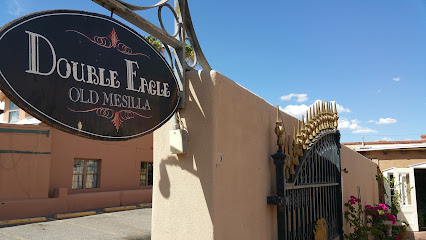
Blake's Lotaburger
Experience the authentic taste of New Mexico with Blake's Lotaburger's signature hamburgers and friendly atmosphere in Alamogordo.
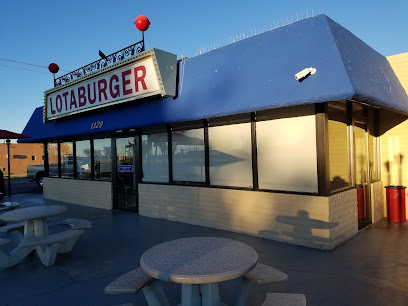
Chope's Bar & Cafe
Experience the vibrant flavors of Mexico at Chope's Bar & Cafe, La Mesa's beloved destination for authentic Mexican cuisine.
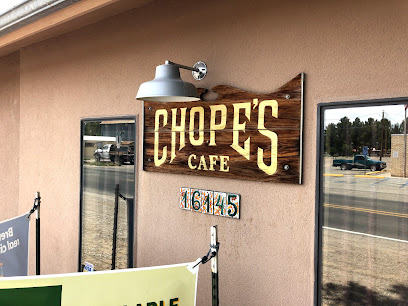
Rizo's Restaurant
Discover the vibrant tastes of Mexico at Rizo's Restaurant in Alamogordo, New Mexico, where every meal is a celebration of authentic flavors.
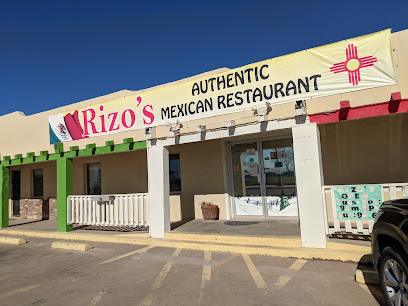
RAD Retrocade
Discover the ultimate blend of nostalgia and flavor at RAD Retrocade, where delicious food meets classic arcade gaming in Las Cruces.
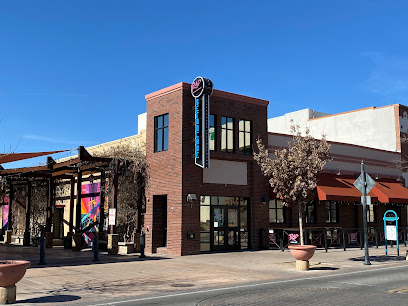
Hacienda de Mesilla
Discover the rich culture, diverse menu, and warm hospitality at Hacienda de Mesilla, a historic gem in New Mexico.
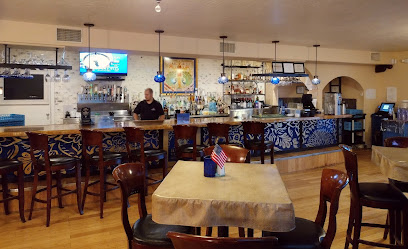
Rockin' BZ Burgers
Experience mouthwatering hamburgers at Rockin' BZ Burgers, a favorite dining spot in Alamogordo, New Mexico, perfect for casual meals and family outings.
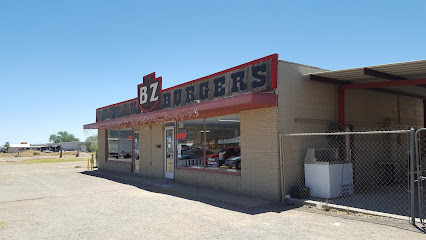
Alamo Pancake & Steakhouse Grill
Experience hearty breakfasts at Alamo Pancake & Steakhouse Grill, where delicious pancakes and steaks meet cozy ambiance in Alamogordo, NM.
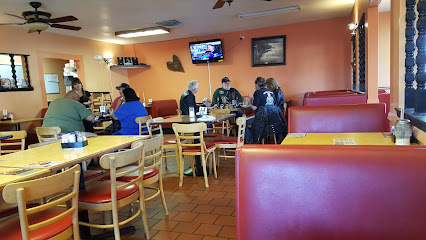
Bull O' the Woods Saloon
Experience the vibrant nightlife at Bull O' the Woods Saloon in Red River, where great drinks and live music create unforgettable moments.

Little Toad Creek Brewery & Distillery Las Cruces
Experience the rich flavors of craft beer and artisanal spirits at Little Toad Creek Brewery & Distillery in the heart of Las Cruces.
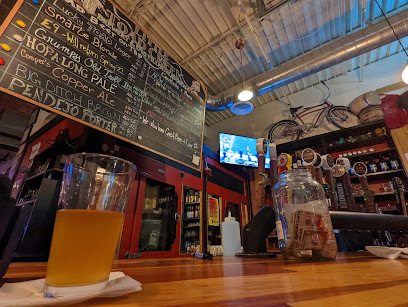
No Scum Allowed Saloon
Discover the Old West at No Scum Allowed Saloon in White Oaks, NM, where history, local brews, and lively atmosphere come together for an unforgettable experience.
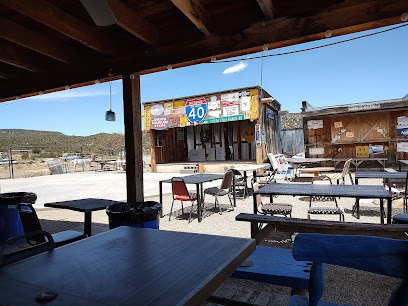
Local Phrases
-
- HelloHowdy
[HAW-dee] - GoodbyeSee ya
[SEE-yuh] - YesYup
[YUP] - NoNope
[NOPE] - Please/You're welcomePlease n' thank ya
[PLEEZ n' THANK yuh] - Thank youMuch obliged
[MUCH uh-BLAHYD] - Excuse me/SorryPardon me
[PAR-dn me] - How are you?Howdy
[HAW-dee] - Fine. And you?Doin' fine. And you?
[DOIN' fine. And yuh?] - Do you speak English?Ya speak English?
[Yuh speak ING-lish?] - I don't understandI ain't got a clue
[I AYN'T got a KLOO]
- HelloHowdy
-
- I'd like to see the menu, pleaseI reckon I'll take a gander at the menu, please
[I REK-in I'll take a GAN-der at the MEN-yoo, please] - I don't eat meatI ain't no carnivore
[I AYN'T no KAR-nuh-vore] - Cheers!Bottoms up!
[BOTTOMS up!] - I would like to pay, pleaseI reckon I'll settle up, please
[I REK-in I'll SET-ul up, please]
- I'd like to see the menu, pleaseI reckon I'll take a gander at the menu, please
-
- Help!SOS!
[S-O-S!] - Go away!Git!
[GIT!] - Call the Police!Ring the Law!
[Ring the LAW!] - Call a doctor!Fetch a sawbones!
[Fetch a SAW-bones!] - I'm lostI'm turned around
[I'm turned uh-ROUND] - I'm illI'm feelin' poorly
[I'm FEEL-in' POOR-lee]
- Help!SOS!
-
- I'd like to buy...I reckon I'll buy...
[I REK-in I'll buy...] - I'm just lookingI'm just browsin'
[I'm just BROW-zin'] - How much is it?How much fer that?
[How much fur that?] - That's too expensiveThat's a bit steep
[That's a bit STEEP] - Can you lower the price?Can ya do any better?
[Can yuh do any BET-ter?]
- I'd like to buy...I reckon I'll buy...
-
- What time is it?What's the hour?
[What's the OUR?] - It's one o'clockIt's one bell
[It's one bell] - Half past (10)Half past ten
[Half past ten] - MorningMornin'
[MORN-in'] - AfternoonAfternoon
[Afternoon] - EveningEvenin'
[EVE-nin'] - YesterdayYest'y
[YES-tee] - TodayToday
[Today] - TomorrowTomorra
[Tuh-MOR-uh] - 1One
[Wun] - 2Two
[Too] - 3Three
[Three] - 4Four
[Four] - 5Five
[Five] - 6Six
[Six] - 7Seven
[Seven] - 8Eight
[Eight] - 9Nine
[Nine] - 10Ten
[Ten]
- What time is it?What's the hour?
-
- Where's a/the...?Where's the...
[Where's the...] - What's the address?What's the street?
[What's the street?] - Can you show me (on the map)?Can ya point it out (on the map)?
[Can yuh point it out (on the map)?] - When's the next (bus)?When's the next (bus)?
[When's the next (bus)?] - A ticket (to ....)A ticket (to ....)
[A ticket (to ....)]
- Where's a/the...?Where's the...
History of White Sands
-
White Sands National Park is home to the largest gypsum dune field in the world. Over 250 million years ago, the area was covered by a shallow sea. As the water evaporated, it left behind vast amounts of gypsum. Over time, this gypsum was transformed into the brilliant white sand dunes we see today.
-
The region around White Sands has been inhabited for thousands of years. Archaeological evidence suggests that the Mogollon and Jornada Mogollon cultures lived in the area as early as 4,000 years ago. These indigenous peoples left behind numerous artifacts, including pottery, petroglyphs, and tools, offering a glimpse into their daily lives and spiritual beliefs.
-
In the late 16th century, Spanish explorers, including Juan de Oñate, ventured into the region. They were among the first Europeans to set eyes on the dazzling white dunes. The Spanish influence is still evident in the area today, seen in place names and cultural practices.
-
During the 17th and 18th centuries, the Apache and Navajo tribes frequently traversed the White Sands region. These tribes utilized the area's resources for hunting and gathering. Their presence is an integral part of the region's rich tapestry of human history.
-
In the late 19th and early 20th centuries, settlers began to establish homesteads and ranches in the White Sands area. These pioneers faced harsh conditions but managed to carve out a living in this unique landscape. Remnants of old homesteads and ranching equipment can still be found scattered throughout the park.
-
On January 18, 1933, President Herbert Hoover established White Sands National Monument to protect the unique gypsum dune field and its surrounding ecosystem. The designation aimed to preserve the natural beauty and ecological significance of the area for future generations to enjoy.
-
During World War II, the White Sands region became a crucial site for military testing. The White Sands Missile Range was established in 1945, and it played a pivotal role in the development of missile technology. The first atomic bomb test, known as the Trinity Test, was conducted nearby on July 16, 1945.
-
In December 2019, White Sands was redesignated from a National Monument to a National Park. This change reflected the area's national significance and aimed to increase awareness and protection of its unique natural and cultural resources.
White Sands Essentials
-
White Sands National Park is located in southern New Mexico. The nearest major airport is El Paso International Airport (ELP) in Texas, approximately 85 miles away. From El Paso, you can rent a car and drive to the park, which takes about 1.5 hours. Alternatively, you can fly into Albuquerque International Sunport (ABQ), which is about 225 miles north of White Sands. From Albuquerque, a rental car drive will take around 3.5 hours. Public transportation options are limited, so renting a car is the most convenient way to get to White Sands.
-
Within White Sands National Park, personal vehicles are the primary mode of transportation. The park features an 8-mile scenic drive known as Dunes Drive, which is suitable for most vehicles. If you don't have a personal vehicle, consider renting one in nearby cities like Alamogordo or Las Cruces. Bicycles are also allowed on Dunes Drive, but be prepared for sandy conditions that can make cycling challenging. No public transportation services are available within the park itself.
-
The official currency in the United States is the US Dollar (USD). Credit cards are widely accepted in hotels, restaurants, and shops in the nearby towns. ATMs are available in Alamogordo and Las Cruces, but it is advisable to carry some cash for smaller establishments or park entrance fees. The entrance fee for White Sands National Park can be paid by credit card or cash.
-
White Sands National Park is generally a safe destination for tourists. However, it is essential to take standard safety precautions. Avoid hiking alone, especially during the hotter months, and always carry sufficient water to stay hydrated. Be cautious of extreme temperatures and swift weather changes. The nearby towns of Alamogordo and Las Cruces are generally safe, but it is advisable to avoid poorly lit areas at night and remain vigilant of your surroundings.
-
In case of an emergency, dial 911 for immediate assistance. The nearest medical facilities are located in Alamogordo, about 15 miles away from the park. It is recommended to have travel insurance that covers medical emergencies. For minor health issues, there are pharmacies in Alamogordo where you can purchase over-the-counter medications. Park rangers are also available to assist with emergencies within the park.
-
Fashion: Do wear lightweight, breathable clothing and a wide-brimmed hat to protect against the sun. Don’t wear flip-flops; opt for sturdy footwear suitable for walking on sand. Religion: Do respect local customs and traditions, but there are no specific religious protocols to follow in the park. Public Transport: Do plan your transportation in advance, as there are no public transport options within the park. Greetings: Do greet people with a smile or a simple 'hello'. Eating & Drinking: Do carry sufficient water and snacks, as there are limited facilities within the park. Don’t leave trash behind; always use designated waste disposal areas.
-
To experience White Sands like a local, visit early in the morning or late in the afternoon to avoid the midday heat and to witness stunning sunrise or sunset views. Engage with park rangers to learn about the unique gypsum sand dunes and the park's ecosystem. Don’t miss out on sledding down the dunes, a popular activity among both locals and tourists. For an unforgettable experience, consider camping overnight under the stars by securing a backcountry camping permit.
Trending Landmark in White Sands
-
White Sands National Park
-
Carlsbad Caverns National Park
-
White Sands Visitor Center
-
McGinn's PistachioLand Home of the World's Largest Pistachio
-
Bandelier National Monument
-
Dripping Springs Natural Area
-
Oliver Lee Memorial State Park
-
Organ Mountains-Desert Peaks National Monument
-
White Sands Missile Range Museum
-
Interdune Boardwalk
-
Alkali Flat Trailhead
-
Space Murals Museum And Gift Shop
-
Roadrunner Lanes
-
Frontier Club
-
White Sands Missile Range
Nearby Cities to White Sands
-
Things To Do in Las Cruces
-
Things To Do in El Paso
-
Things To Do in Truth or Consequences
-
Things To Do in Ruidoso
-
Things To Do in Socorro
-
Things To Do in Roswell
-
Things To Do in Albuquerque
-
Things To Do in Bernalillo
-
Things To Do in Bisbee
-
Things To Do in Santa Fe
-
Things To Do in Sante Fe
-
Things To Do in Las Vegas
-
Things To Do in Los Alamos
-
Things To Do in Gallup
-
Things To Do in Midland

